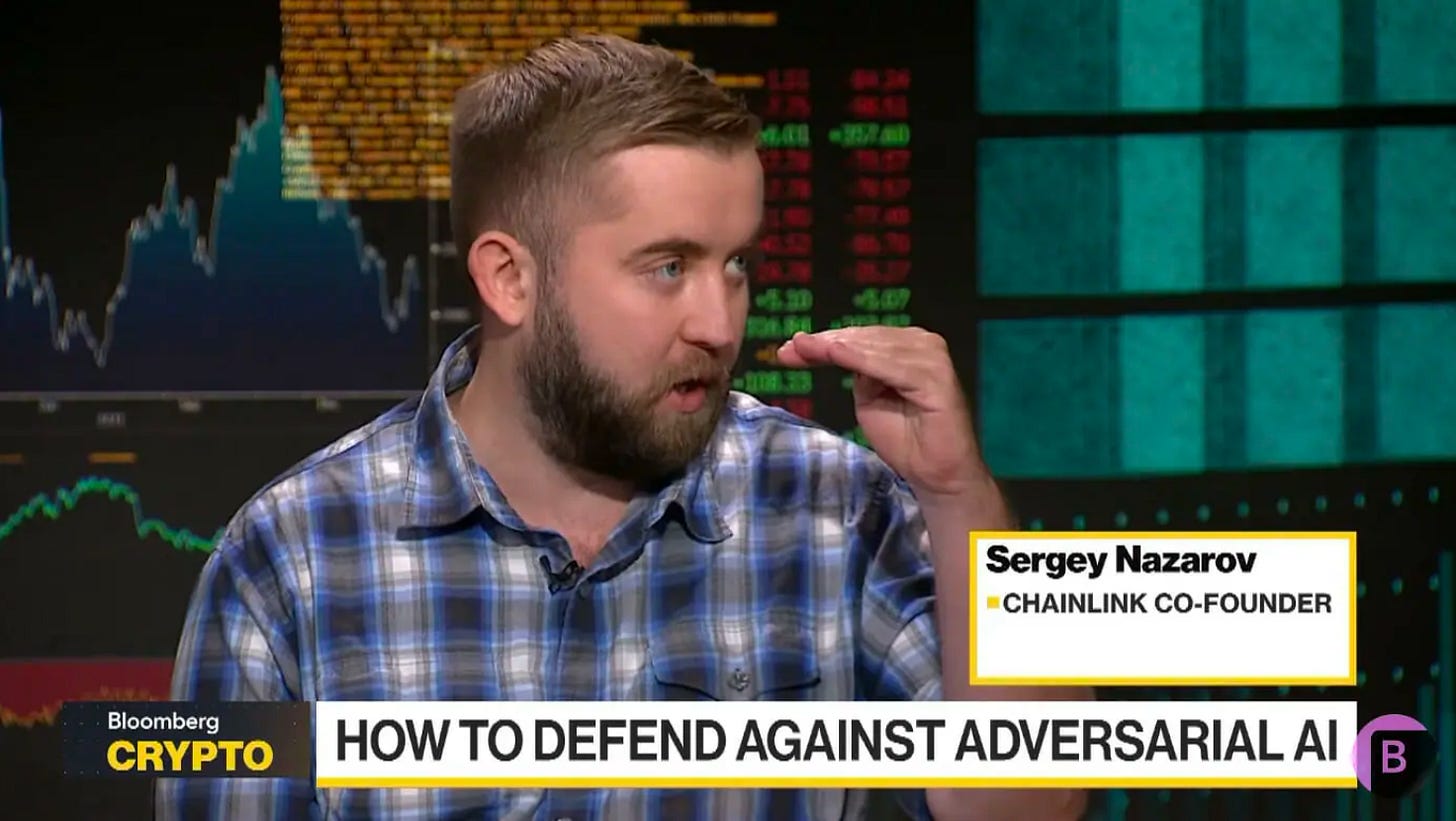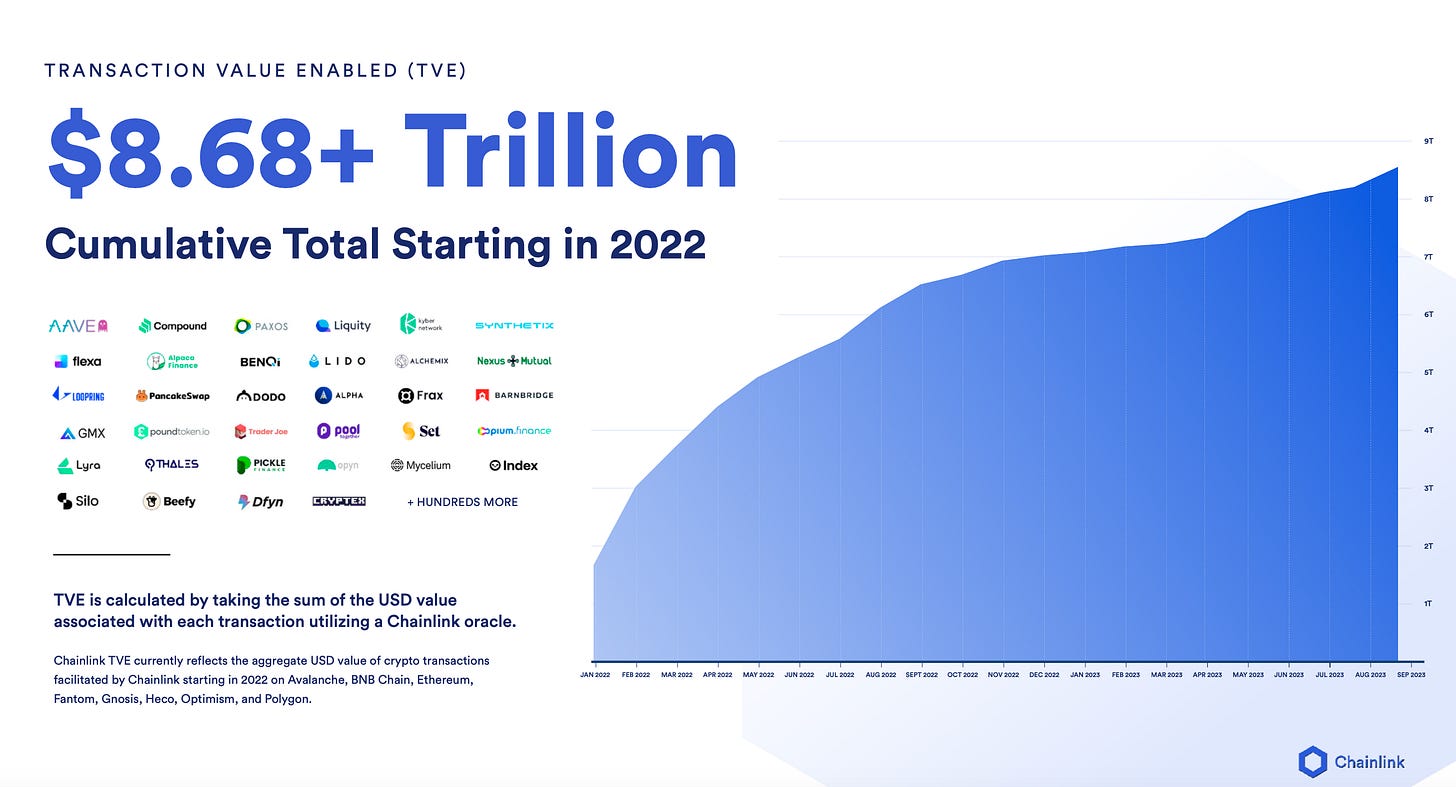Disclosure: This is market commentary, not investment recommendations. For investment guidance seek professional help.
In tech investing there is the Hype Cycle. As investors we either want to be early and catch wave 1, or wait for the crash and invest during the Trough of Disillusionment.
Think internet in 2002.
That’s where we are with crypto. ‘The Trough of Disillusionment’ And that’s the opportunity.
The COVID Bubble
During the COVID mania tokens like Chainlink (LINK) surged 20x from $2 during the lows in 2020 to over $48 and an $18bn market cap in 2021, only to crash 85% back down to $7 or $4bn market cap in 2023.
So is crypto stupid COVID bubble stuff, or revolutionary assets going through the normal hype cycle of a disruptive technology?
The latter.
If we ignore price for a moment and look under the hood at activity on the Ethereum blockchain, we see a growing number of software developers beavering away cooking up more and more code. At the software level, which is what counts, the innovation continues. This was a key indicator to stay bullish in 2020 during the last crypto winter.
The Man with the vision, Sergey Nazarov: CEO of Chainlink
In crypto land there are hundreds of tokens, multiple different blockchains, and every project touts itself as the next big thing. Amongst all the noise and visionary promoters I’ve always been drawn to Chainlink’ CEO Sergey Nazarov.
Despite running one of the most interesting crypto company, Sergey has an unassuming air in the way he speaks. He’s humble and likeable. And he always wears a lumberjack shirt. Jobs had black sweaters. Sergey has lumberjack shirts. And usually blue. I like it.
But more important than likability, Sergey’s Chainlink solves a crucial problem for the blockchain.
Trustworthy Oracles.
We all love the idea of smart contracts which automatically execute transactions based on code, but how do we know we can trust the data these smart contracts are receiving?
Imagine a blockchain based insurance contract which automatically sends USDT to your wallet if your flight is delayed. No arguments, no waiting in line at the customer service counter, if the data says the flight was delayed, even by 1 min, the smart contract automatically pays you.
But how do you, or the airline, trust that somebody hasn’t figured out a way to game the data feed? Maybe someone has created an smart contract based insurance company linked to a fake airline arrival website so they never pay out. This could also be the case for smart contracts based on data for stock prices, weather, sports scores, or the random numbers in an online lottery.
Chainlink specialises in providing secure data to blockchain based smart contracts. The blockchain term for these data feeds is ‘oracles’. Their token, LINK, is the cryptocurrency Chainlink created to reimburse oracles for the data they are proving.
In the early days (2019) Chainlink’s secure oracles were an interesting side aspect of the blockchain, but investors were more focused on Bitcoin (digital gold) and Layer 1’s (Ethereum). Over time there has been an increasing realisation of the value of oracles and Chainlink.
Chainlink’s data feeds have become a key building block for blockchain based smart contracts.
At the same time the Chainlink’s development team has been highly innovative in pushing the boundaries of what an oracle can do. Certifiable randomness for example was a recent Chainlink innovation.
Another innovation (Chainlink Functions) is to secure and verify the computations done on the data, in addition to the data itself.
CCIP (the global securities clearing protocol?)
Sergey’s latest invention is CCIP (Cross chain interoperability protocol). Sounds confusing, but it’s massive.
I’ve been watching Sergey present for years and it used to pique my interest when several times in the past he would digress into his interest in the Swift messaging protocol used by banks to send FX transactions. Why was Sergey talking about an old world bank messaging system? And why was he saying he thought SWIFT was actually quite good and could be used to interact with the blockchains? If he’s saying SWIFT works so well, isn’t that a negative for blockchains?
Three years later Chainlink introduced CCIP, a collaboration with the banks, clearing houses and SWIFT. It’s brilliant and it’s Chainlink’s solution to allow different blockchains to interact with each other and for traditional banking systems to interact with blockchains, without everyone having to change all of their software.
Sergey’s had 2 realisations. First, there wasn’t going to be 1 blockchain to rule them all (Ethereum or Polkadot). Instead there would be hundreds if not thousands of different blockchains, each with their specific use cases and they all needed to be able to interact. Same as how there are thousands of email service providers, but we all connect with each other and don't have to sign up for everyone else’s email provider.
Second, you couldn't force the banks onto public blockchains. They already had their legacy systems and they work relatively well. Instead there needed to be a way for traditional finance companies to be able to interact with blockchain based systems using their existing technology.
The answer was CCIP. CCIP is the messaging system Chainlink created for all these systems to interact. To put it another way. CCIP is the connection between all the different blockchains and crucially the link between tradfi (traditional finance) and blockchains.
In building CCIP Sergey worked with 10 different banks and SWIFT to make this connectivity possible. Rather than fight the system, he is bringing them along and making them part of it. And it’s working.
Here is Tom Zschach,the Chief Innovation Officer at SWIFT praising how SWIFT can be used for the tokenisation of assets.
“Interoperability is at the heart of everything we do at Swift. For tokenisation to reach its potential, institutions will need to be able to seamlessly connect with the whole financial ecosystem. Our experiments demonstrate that existing Swift infrastructure can provide that central point of connectivity, removing a hurdle in the development of tokenisation and unlocking its potential.”
Sergey’s Keynote address at Smartcon 2023.
Now please take some time to watch Sergey’s keynote address in the video at the top of the post. I just wanted to first give the background to what he is talking about and why it’s important. It’s OK if you don’t understand everything at the end.
At some point it will be time to buy some LINK for the ‘Plateau of Productivity’.
Below is a ‘link’ to Sergey’s slide presentation.
Have a good weekend!
Erik












